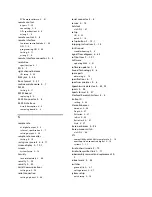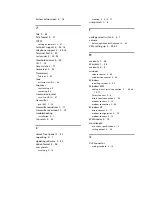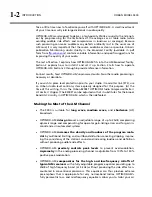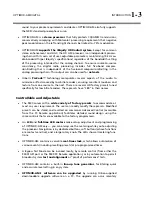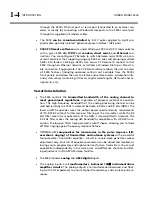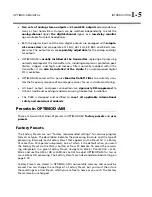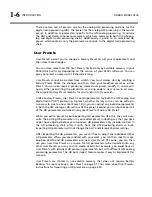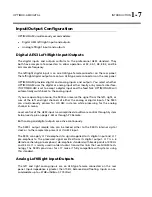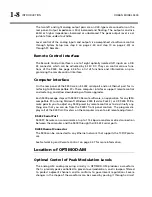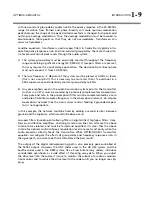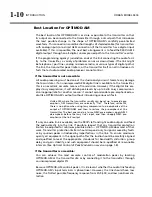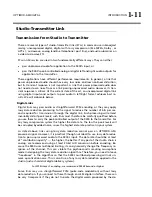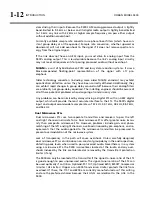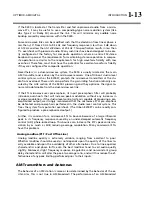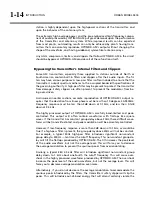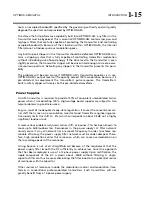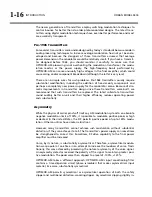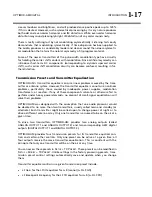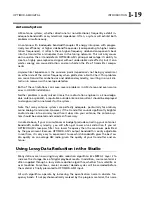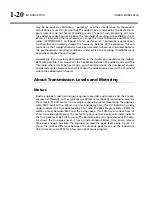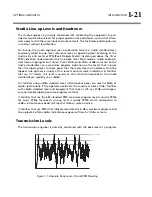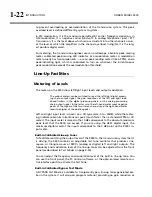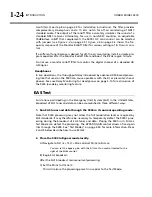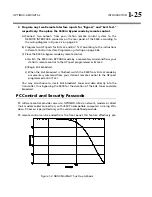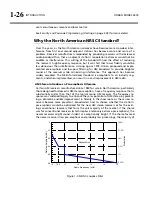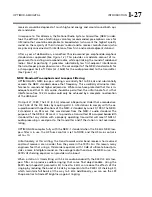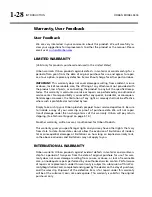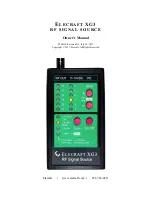
OPTIMOD-AM DIGITAL
INTRODUCTION
1-13
If the 9400 is located at the transmitter and fed unprocessed audio from a micro-
wave STL, it may be useful to use a companding-type noise reduction system (like
dbx Type 2 or Dolby SR) around the link. This will minimize any audible noise
buildup caused by compression within the 9400.
Some microwave links can be modified such that the deviation from linear phase is
less than +10
from 20 Hz to 9.5 kHz and frequency response is less than 3 dB down
at 0.15Hz and less than 0.1 dB down at 20 kHz. This specification results in less than
1% overshoot with processed audio. Many such links have been designed to be eas-
ily configured at the factory for composite operation, where an entire FM stereo
baseband is passed. The requirements for maintaining stereo separation in compos-
ite operation are similar to the requirements for high waveform fidelity with low
overshoot. Therefore, most links have the potential for excellent waveform fidelity
if they are configured for composite operation.
Nevertheless, in a dual-microwave system, the 9400 is usually located at the main
AM transmitter and is driven by the microwave receivers. One of Orban’s studio level
control systems, such as the 8200ST, protects the microwave transmitters at the stu-
dio from overload. These units also perform the gain riding function ordinarily exe-
cuted by the AGC section of the 9400’s processing and they optimize the signal-to-
noise ratio obtainable from the dual-microwave link.
If the STL microwave uses pre-emphasis, its input pre-emphasis filter will probably
introduce overshoots that will increase peak modulation without any increases in
average modulation. If the studio level control system is capable of producing a pre-
emphasized output, we strongly recommend that the microwave STL’s pre-emphasis
be defeated and pre-emphasis performed in the studio level control system. This
frees the system from potential overshoot. (The Orban 8200ST can be readily con-
figured to produce a pre-emphasized output.)
Further, it is common for a microwave STL to bounce because of a large infrasonic
peak in its frequency response caused by an under-damped automatic frequency
control (AFC) phase-locked loop. This bounce can increase the STL’s peak carrier de-
viation by as much as 2dB, reducing average modulation. Many commercial STLs
have this problem.
Analog Landline (PTT / Post Office Line)
Analog landline quality is extremely variable, ranging from excellent to poor.
Whether landlines should be used or not depends upon the quality of the lines lo-
cally available and upon the availability of other alternatives. Due to line equalizer
characteristics and phase shifts, even the best landlines tend to veil audio quality
slightly. Moreover, slight frequency response irregularities and non-constant group
delay characteristics will alter the peak-to-average ratio, and will thus reduce the ef-
fectiveness of any peak limiting performed prior to their inputs.
AM Transmitters and Antennas
The behavior of an FM station is more or less determined by the behavior of the ex-
citer. Alas, this is not true in AM broadcast! The performance of an AM broadcast
Summary of Contents for Optimod-AM 9400
Page 1: ...Operating Manual OPTIMOD AM 9400 Digital Audio Processor Version 1 2 Software...
Page 7: ...Operating Manual OPTIMOD AM 9400 Digital Audio Processor Version 1 2 Software...
Page 52: ......
Page 204: ......
Page 232: ......
Page 260: ......
Page 261: ...OPTIMOD AM DIGITAL TECHNICAL DATA 6 29...
Page 267: ...OPTIMOD AM DIGITAL TECHNICAL DATA 6 35 CPU Module...
Page 273: ...OPTIMOD AM DIGITAL TECHNICAL DATA 6 41 RS232 BOARD PARTS LOCATOR...
Page 275: ...OPTIMOD AM DIGITAL TECHNICAL DATA 6 43 8300 POWER SUPPLY PARTS LOCATOR...
Page 284: ...6 52 TECHNICAL DATA ORBAN MODEL 9400 DSP BOARD PARTS LOCATOR DRAWING 32170 000 14...
Page 292: ...6 60 TECHNICAL DATA ORBAN MODEL 9400 DISPLAY BOARD PARTS LOCATOR...
Page 293: ...OPTIMOD AM DIGITAL TECHNICAL DATA 6 61 DISPLAY BOARD...

